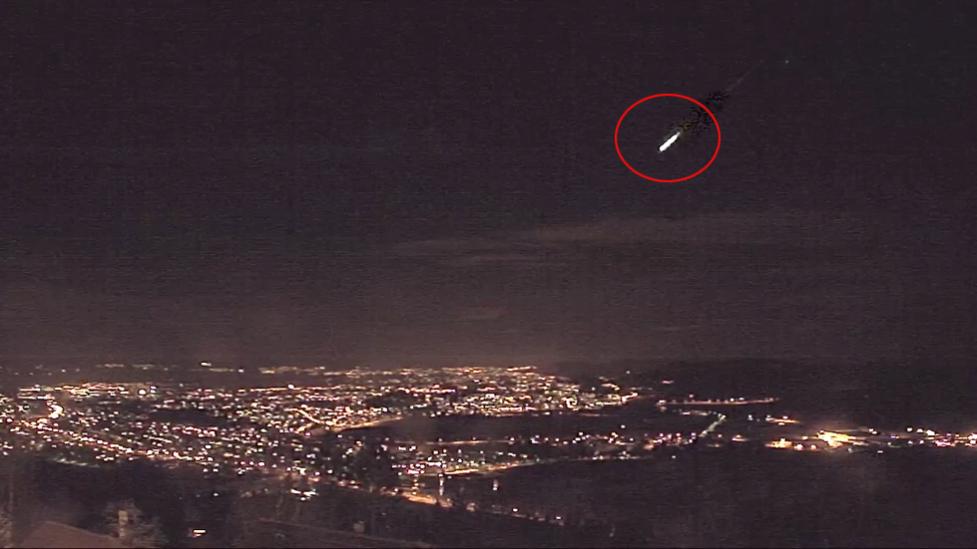Before the dust from the previous meteor had settled down, a new meteor illuminated the night sky over the eastern part of Norway. Tonight's fireball was observed at 00.09.30 on the 14th of March, and was visible for just under 6 seconds, Steinar Midtskogen told Dagbladet.
The astronomy enthusiast had erected a camera that surveys the sky from Voksenlia in Holmenkollåsen. It is so far not possible to determine whether the object burnt up in the atmosphere or if parts of it reached the ground in the form of meteorites.
This one was weaker than the one we saw on March 1st. Whether it produced any meteorite downfall is too early to tell but it is definitely a candidate that should be followed up, according to Midtskogen.
The third fireball
More data and searching of footage is needed before it is possible to say anything about its trajectory. Seen from Oslo the meteor was visible in the southwest, possibly over southern parts of Buskerud or Telemark.
This is the third large meteor over eastern Norway that has been caught on tape in the last few weeks. In addition to the meteor in the beginning of March, people driving to work in the morning rush-hour saw a similar sight on the 3d of February. Earlier this week it also became known that a meteorite probably went through a roof in Rodeløkka in Oslo.
The earth is constantly bombarded with matter from space. What is commonly known as stardust is tiny particles the size of sand grains that enter the atmosphere and is a common sight on a clear night. The earth is hit with these particles several million times each day.
More than usual
The larger fireballs that are observed several times a year are typically caused by objects from 15-20 grams up to 100 grams, says professor Kaare Aksnes at the Institute of Theoretical Astrophysics at the University in Oslo.
Comment: Okay, except the one which broke up and crashed to the ground a few nights ago contained several chunks, one of which weighed at least 700 grams!
Even though they are rarer than the tiny particles they still enter the atmosphere regularly over Norwegian territory. They often remain undetected because their trajectory takes them over uninhibited areas, in the daytime or when it is cloudy.
You can get meteors during daylight as well, but they would have to be large, Aksnes says.
On account of information indicating that this night's meteor was smaller than the fireball from the 1st of March, Aksnes holds it unlikely that fragments have survived the journey through the atmosphere without being burned up.
This one must have been significantly smaller. The particles do not have to be very big but can still illuminate a large part of the sky, Aksnes says.
Steinar Midtskogen, who started his camera project 8-9 years ago, believes he "has observed more luminous meteors than usual lately."
This can be a coincidence, or it can be because the earth enters areas in space that holds larger amounts of debris that then hits the atmosphere. Aksnes thinks the cause is the former.
The earth isn't presently in a portion of space that should cause a meteor swarm, Aksnes says.




I was out on the porch, just south of Oslo, at midnight the 3 of mars and also spotted a fireball heading northeast. It lasted maybe half as that in the video above.